Latest News
July 1, 2006
By DE Editors

DP Technology (Camarillo, CA) has released ESPRIT Mold, an automated 3-axis and 5-axis CAM system. Using knowledge of in-process stock, remaining material, and integrated simulation and verification, ESPRIT Mold delivers programming for a wide variety of 3D machining applications.
 |
| ESPRIT Mold. |
ESPRIT Mold automatically manages the in-process stock model, allowing the user to combine 20 different milling strategies from 2 1⁄2–axis to 5-axis for optimized tool paths. It incorporates more than 12 years of accumulated expertise and technology in high-speed machining, the company says.
For more information about the ESPRIT family of CAM software, which also includes ESPRIT SolidMill, ESPRIT SolidTurn, ESPRIT SolidMillTurn, and ESPRIT SolidWire, click here.
ESPRIT Mold from DP Technology received the most votes in our May 2006 issue. Vote for your favorite product from this issue at the last page of this section.
Silicon Graphics (SGI; Mountain View, CA) has unveiled a new line of cluster solutions based on the dual-core Intel Xeon processor 5100 series—the Woodcrest processor announced by Intel in late June. In a simultaneous announcement, SGI also introduced the new Altix 450 mid-range blade server based on dual-core Intel Itanium 2 processors.
 |
| SGI’s Altix XE |
SGI’s new family of 64-bit Linux-based servers and factory-integrated clusters, the Altix XE, is custom-configured around a pair of dual-core Xeon 5150 processors to optimize leading applications. What this means is that the Altix XE servers enable companies to organize themselves for hybrid workloads that combine brute-force system horsepower with the efficiency achieved through customization to drive their mission-critical applications.
The Altix XE can accommodate up to four processor cores and support up to 32GB of memory. Its energy-efficient design requires just 65 or 80 watts per socket, which has an added benefit of reducing power management and cooling concerns for IT. SGI says that the Altix XE’s modular systems management design helps meet RAS (reliability, availability and serviceability) requirements. Memory bandwidth is reported to be 21GB/sec.
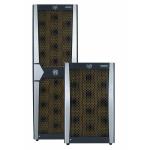 |
| Altix 450. |
SGI plans call for the Altix XE systems to support both Novell SUSE Enterprise Linux Ver. 9 and 10 (when available) and Red Hat) Enterprise Linux 4 (planned, July 2006), along with SGI ProPack for Linux 5 acceleration software. The new server is available in two form factors: a 1U chassis suitable for dense cluster configurations and a 2U chassis that provides a plentiful number of I/O to serve as a cluster head node. The Altix XE can be ordered today. Base configuration pricing starts at less than $3,100. For complete details, on the Altix XE, click here.
In related news, SGI introduced the Altix 450, a mid-range blade server that offers up to 2.5 times the performance of the current Altix 350 server at a lower cost. Using dual-core Intel Itanium 2 processors, the Altix 450 is said to provide greater Linux server density to maximize floor space while reducing heat dissipation and using up to 20 percent less power than its single-core predecessors.
The Altix 450 is made up of modular blades—interchangeable compute, memory, and I/O blades for plug-and-solve configuration flexibility. Each Altix 450 system can scale to 38 Intel Itanium 2 sockets (up to 76 processor cores) and up to 456GB of globally addressable memory.
The Altix 450 is expected to be available shortly. Pricing begins at less than $15,000. For more information on the Altix 450, click here.
ENOVIA 3D Live Announced
Dassault Systemes (DS; Paris, France) recently announced ENOVIA 3D Live beta version, calling it the first “3D Collaborative Intelligence” solution. It exploits the V5 SOA architecture and allows a user to navigate or search for any PLM (product lifecycle management) information, regardless of location, source, or format.
According to Dassault Systemes, ENOVIA 3D Live is a lightweight application that will be available via the Web. ENOVIA 3D Live is said to make it possible for anyone to connect to any PLM information source. New technologies introduced with ENOVIA 3D Live include 3DSearch, 3Dnavigation, and 3DCollaboration. ENOVIA 3D Live can embrace any PLM data via V5 SOA open architecture.
The V5 SOA strategy—SOA stands for Service Oriented Architecture—will be the technical foundation for future DS PLM brands and partner solutions. Dassault says that it intends to leverage this foundation to extend the benefits of PLM solutions to new markets and new types of users and communities.
V5 SOA provides services in five domains: V5 SOA collaborative user experience; V5 SOA business process modeling and execution; V5 SOA IP modeling, integration, and management; V5 SOA Enterprise foundations (search, collaboration, etc.); and V5 SOA openness (web services, 3D
ENOVIA 3D Live, currently being beta-tested by select DS clients, will be available later this year. For more information, click here.
The Kira Corp. (Kira, Japan) says that its PLT-20 KATANA paper laminating concept modeler can produce 3D models reliably, cleanly, and quickly.
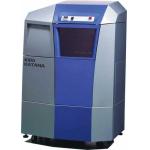 |
| PLT-20 KATANA from Kira Corp. |
Kira claims that the models created by the PLT-20 offer a finish quality “far superior to many competitive offerings” due, in part, to the system’s cutter-plotter ability to cut models slice by slice efficiently. Users can also adjust quality, and speed can be adjusted based on the specialty paper used or by choosing between single-lamination or double-lamination. The PLT-20’s newly developed software enables you to import STL files, adjust model layout, and create parting lines in five minutes, according to the company.
The PLT-20 KATANA is available with a one-year warranty, starter kits, and system software for approximately $35,000. For complete details and to find local distrubtors, click here.
New DFMA 2006 Software Targets Cost ReductionDFMA 2006, the latest version of Design for Manufacture and Assembly (DFMA) software by Boothroyd Dewhurst, Inc. (Wakefield, RI) software contains upgrades of two modules in the integrated DFMA suite: DFA Version 9.3, and DFM Concurrent Costing Version 2.2.
According to the company, DFMA 2006 guides engineers through the process of simplifying a product design, then estimates assembly labor and part manufacturing costs. The software isolates the major cost drivers associated with a wide range of choices for part manufacture and finishing.
 |
| DFMA sofware help desing the Symbol Technologies’ MC9000 family of scanners. |
The software contains early cost models for material and manufacturing processes, including sheet metalworking, machining, structural foam molding, plastic extrusion, injection molding, thermoforming, blow molding, cold and hot die casting, hot forging, powder metal processing, sand casting, and investment casting.
DFMA 2006 adds two new processes: estimating the cost to manufacture printed circuit boards and comparing the cost of automatic versus manual product assembly. The printed circuit board process incorporates cost models for bare board manufacture as well as population of the board. The cost estimate for bare board manufacture is based on complexity and includes costs for internal and external circuit generation, lamination, AOI testing, hole drilling, solder masking, legend printing, and final circuit testing. Consequently, electromechanical development teams can include estimates for printed circuit boards in their early cost profiles.
The automatic assembly process estimates the cost of assembling a product on an automatic high-speed assembly machine. For comparison purposes, the software also computes the estimated cost of assembling the same product on a manual assembly line.
DFMA software operates in Microsoft Windows 98, Windows 2000, and Windows XP. For more information, click here.
AutoVue 19.1 Paves Way for Seamless 2D to 3D Migration
The latest release of AutoVue, version 19.1, from Cimmetry Systems Corp. (Montreal, Quebec), adds support for popular 3D formats, providing users with the ability to view and collaborate in both 2D and 3D.
A number of new format and product enhancements are included in version 19.1, including support for AutoCAD 3D 2000 and up, MicroStation 3D V8 and up, CATIA 5 R16, and Solid Edge 18, as well as enhanced PMI (product manufacturing information) support.
This release expands AutoVue’s EDA capabilities by adding NC Drill formats, Cadence Allegro and Concept 15.5, as well as OrCad Capture and Layout 10.5. Additionally, AutoVue’s Gerber file aperture support has been enhanced.
AutoVue 19.1 provides a means to view, print, and comment on 2D and 3D drawings. Its native-document viewing capability enables users to view documents without needing file conversions. For a full list of formats supported by AutoVue version 19.1, click here. While on the Cimmetry website, you can download a fully functional demo copy, try an online demo, or find a local reseller.
DENSO Robotics (Long Beach, CA) offers a wide range of high-speed, four-, five- and six-axis robots with reaches from 350 to 1,300 mm for payloads of up to 20 kg. Repeatability is as low as ±0.015 mm. Standard, cleanroom (Class 10 and Class 100), and dust- and mistproof models are available.
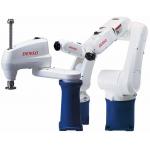 |
| DENSO Robotics. |
DENSO robots are said to feature a high maximum moment of inertia that allows manufacturers a choice of end effectors, while their space-saving design facilitates integration. The robots are ANSI and CE compliant, making them ideal for global deployment. Programming software, controllers, and teaching pendants are also offered, including DENSO’s WINCAPS II 3D simulation software that allows offline programming as well as remote monitoring of robot operations.
For complete details, click here.
Gridgen Port for AMD Runs Linux and WindowsGridgen Version 15.09 CFD (computational fluid dynamics) meshing software by Pointwise (Forth Worth, TX) is now available for Windows and Linux workstations running the AMD Opteron processor.
New features released in Gridgen V15.09 include solid modeling, a deformation-based scheme for pyramid cell generation in hybrid meshes, a new native interface to the FrontFlow flow solver, upgraded native interfaces to the Fieldview CFD postprocessor and the Cobalt and STAR-CD flow solvers, and a port to the Silicon Graphics Prism Deskside.
Gridgen generates structured, unstructured, and hybrid meshes; interfaces with CFD solvers such as Fluent, STAR-CD, and ANSYS CFX as well as many neutral formats such as CGNS. It runs on Windows (Intel and AMD), Linux (Intel and AMD), Macintosh, and Unix platforms; and has a scripting language that can automate CFD meshing.
For more, click here.
Elgorithms (Pryor, OK) says that its Windows-based MagicTracer differs from other raster-to-vector systems because it provides both raster and vector tools. Additionally, the company asserts that MagicTracer’s “unique” overlay feature increases “the ease of editing in both raster and vector modes.”
MagicTracer offers an assortment of raster and vector editing tools as well as more than 100 customizable functions. Raster tools include freehand, polygon, box, circle, and magic wand; pseudo colors; change color depth (1, 4, 8, 24 bits); and various drawing tools. Vector editing tools include box, line, ellipse, arc, curve, and sketch drawing tools; and lines to hatch, curve to line and back again. A complement of raster processing, vector conversion, and DXF “save as” options are provided.
MagicTracer comes with step-by-step tutorials and documentation. MagicTracer costs $49.95 for a permanent license. To view video demonstrations of the program’s vector conversion process, download a trial version, or for more information, click here.
Each of 16 channels on the new signal conditioning cards from Omega Engineering (Stamford, CT) accepts an OM5 (5B) isolated analog input module. With DaqView software, a user can easily configure any channel to measure temperature, strain, voltage, current, or frequency with either the OMB-DBK207 or OMB-DBK207/ CJC.
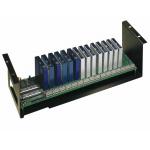 |
| Signal conditioning cards from Omega. |
The cards are designed for use with Omega’s OMB-LOGBOOK-300, OMB-DAQBOARD-2000 Series, and OMB-DAQSCAN-2000 Series products. Screw terminals allow easy connection of field signals, and there are sockets for the current conversion resistors supplied with OM5 (5B) current I/O modules. Up to 16 cards can be daisy-chained for a maximum capacity of 256 inputs. The OMB-DBK207/CJC has cold junction compensation for obtaining linearized and compensated values from OM5 (5B) thermocouple modules. Both cards use a 5Vdc power supply.
Price: $249 (to start). For more information, click here.
MFG.com (Atlanta, GA), formerly known as ManufacturingQuote.com, an online marketplace that matches buyers with suppliers of manufactured parts, has announced a suite of tools that it says will improve the buyer’s experience building and issuing RFQs (request for quotes). Designed using Flex, the company says the new tools simplify the process to create an RFQ by increasing both flexibility and efficiency throughout the duration of the RFQ creation process.
According to the company, the new tools provide buyers with several features that simplify the quoting process. New features allow users to mark RFQs that might be restricted under ITAR (International Traffic and Arms Regulation); search by function on the engineering process list; view distribution of whom the RFQ will be sent to prior to release, enabling users to add, remove, and narrow down suppliers from the preselected distribution list; and mouse-over functions for help.
MFG.com also provides users with step-by-step video instructions for the process. Additionally, customer service representatives are available by telephone, live chat, and e-mail to lend a hand. For details, click here.
IronCAD (Atlanta, GA) has released IronCAD V9 and highlights its new intelligent creation, modification, and positioning capabilities.
Objects within IronCAD are made “intelligent’” by implementing capabilities like SmartAssembly, which lets users create attachment locations that automatically position components in a scene. This helps users designing assembly configurations from standard components create models quickly by eliminating repetitive positioning of components.
With the IntelliStretch Command., you can resize components based on a component’s overall size box. This overcomes typical limitations of traditional history-based parametric systems by enabling multiple component changes regardless of the order in which they were created.
In addition to the “intelligent” capabilities, other improvements include assembly-based spot and point light capabilities; shell command options for inside/outside shell; 2D sketch, new creation types and SmartSnap Update; copy/link components along a 3D curve; point creation in 3D curves as reference points; 3D curve modification tool enhancements; surface creation and modification enhancements; and sheet metal closed corner tool.
IronCAD V9 is now available. For a detailed description of IronCAD V9’s new features, click here.
FARO Technologies (Lake Mary, FL) has added a new measurement device, the FARO PowerGAGE, to its product line. The PowerGAGE is different from its FARO Gage and Gage-PLUS counterparts in that it can perform CAD-to-part analysis.
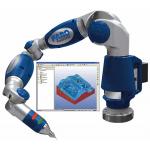 |
| The FARO PowerGAGE. |
Whereas the FaroArm runs on more than 60 different software platforms, the PowerGAGE runs exclusively on a version of Delcam’s PowerINSPECT. When equipped with both of PowerINSPECT’s Programmer and Play-Only modules, PowerGAGE users can create inspection programs/routines offline for anyone in the facility to run, import all major industry CAD formats, perform surface inspection against master CAD files, receive on-screen instructions including images and videos, access a full suite of geometric inspection tools, automatically optimize the viewing angle of the part as they measure, save all inspection data, and run customized reports.
According to a press release from FARO, The PowerGAGE resembles a short, metallic arm and is a high-tech, yet user-friendly manufacturing inspection device. Users can mount the PowerGAGE directly to where the part is being made. As the user traces the arm’s tip over the surface, the system’s laptop computer verifies all of the part’s 3D measurements against the original CAD file. For more information, click here.
New SofTech ProductCenter 8.5.1 Released
SofTech (Tewksbury, MA), a provider of PLM (product lifecycle management) solutions, has released the latest version of its ProductCenter PLM system, 8.5.1. This new release is reported to strengthen ProductCenter’s CAD integration support. The company says that version 8.5.1 also adds a new database option for Microsoft SQL Server 2005 and extends internationalization of the software for global markets.
SofTech says that this new version includes many customer-driven features. Significant upgrades and enhancements to the new ProductCenter PLM 8.5.1 release include SQL Server 2005 support; new CAD integration for CATIA v5, UGS NX, and ME10; support for new CAD package releases; expanded international language support; additional ProductCenter Integrator enhancements; enhanced Web Client Graphical Process Viewer; new Forms Editor enhancements; and ProductCenter VOM Export.
For more information, click here.
SmartCAMcnc (Eugene, OR) announced the release of version 13.0 for its milling and machining solutions. New versions of SmartCAM Production Milling, Advanced Milling, FreeForm Machining, Production Turning, Advanced Turning, Advanced Wire EDM, and Advanced Fabrication are now available with features the company says amount to “a huge improvement” over the way the software is currently used. SmartCAM V13 includes benefits for organizing, viewing, managing, and documenting SmartCAM models.
 |
| SmartCAM 13.0. |
Among the highlights of SmartCAM are a new set of group commands that allow certain elements to be selected and hidden without regard for their Step or Layer property. Unlike masked elements, says a press release on version 13, hidden elements remain active in the database so it is now possible to backplot hidden toolpath elements to the graphics view individually. There’s also a new display-filtering capability that provides more control over graphics and list views. The View Filters capability means an entire class of elements can be removed from the display.
Other highlights of the release include a new container element type so multiple elements can be collapsed into a single element; roughing ramp entries into uncut material in SmartCAM Milling applications that eliminate dangerous moves; and powerful surfacing capabilities that allow Pencil mill and radial/spiral/pocket projection for removing uncut material in FreeForm Machining.
For more information, click here.
EUROCOM (Nepean, Ontario) has launched its first notebook built upon the new Intel Core Duo processor and ATi Mobility Radeon X1800XT VGA with 256MB of DDR3 VRAM for fast graphics. The new EUROCOM M570U Divine features a 17-in. display and full-size desktop-like keyboard and is designed for high-performance computing, analysis, gaming, and home-video editing.
The M570U Divine display offers 16:9 Aspect Ratio and WUXGA 1920 x 1200 pixels resolution. The unit has a 667MHz frontside bus, and up to 4GB of 667MHz PC2-5300 Memory and 16x PCI Express architecture. Two physical serial ATA hard drives provide storage for as much as 320GB, and upgradable VGA offers fast graphics performance with ATi Mobility Radeon x1800XT or Nvidia GeForce Go7900GTX with 256MB of GDDR3 VRAM.
A removable modular bay can take an optical drive, a second hard drive, or a secondary battery pack. The M570U has 802.11a/b/g wireless, Bluetooth 2.0, and Gigabit Ethernet networking built-in, as well as a 4-in-1 portable media card reader, integrated 1.3-megapixel webcam, and sound system.
Price: $2,251 (to start). For more information, click here.
Subscribe to our FREE magazine, FREE email newsletters or both!
Latest News
About the Author
DE’s editors contribute news and new product announcements to Digital Engineering.
Press releases may be sent to them via [email protected].






